Positional Play has dominated football in recent years, not only in tactics but in our perception of football.
Our interaction with football analysis began from a positional complex, where principles became fundamental and to a fault, non-negotiable.
Positional Play provided the ultimate blueprint for a positional philosophy, a philosophy where football was to be rationally conquered.
In this world, identifying how space is viewed is essential to truly understanding Positional Play.
In fact, the perception of space is fundamental and perhaps the guiding factor in any tactical philosophy.
Positional Play begins from a scientific approach, a wish to rationalise football enough to impose ideas on it.
The pitch is divided into zones, and the occupation of these zones is rational, looking to create optimal structures to progress the ball.
On a micro-scale, these structures are formed by geometrically perfect shapes, most notably triangles, which create optimal angles and passing networks.
Take a step backwards and you have the famous 3-2-5 we all love — or don’t.
As always in history, once a revolution reaches its peak, a counter-revolution begins.
Growing in popularity, Functional Play provides an alternative to the positional lens.
Of the eight remaining teams in the UEFA Champions League, three teams fall into this category: Serie A’s Napoli, Portugal’s Benfica, and the glorious Real Madrid.
The growth in popularity is undeniable, but what exactly is this new style?
With South American roots, Functional Play is a football of great mobility and interchange of players.
Relations are prioritised — not only how players relate with the ball but the player’s individual relation with space. In this world, space and time only exist in relation to the players.
Possession is not approached with tactics and predefined spaces but with individuals and dynamic spaces.
While in Positional Play the space occupied is essential to be able to perform well, in Functional Play it is the individual performance that determines the spaces.
Like Positional Play, relational football has many faces.
Napoli’s structure is different to Benfica’s, and those are completely different to Fluminense’s.
Nonetheless, they all consistently fit the individuals.
The players look at home, in a structure moulded for each one of them.
In this sense, structure must not be considered with positional eyes, as shapes.
To quote Luciano Spalletti, “systems no longer exist in football, it’s all about the spaces left by the opposition.
You must be quick to spot them and know the right moment to strike, have the courage to start the move even when pressed.”
This tactical analysis aims to break down the concept of space and how it is viewed in Functional Play.
Through tactical theory, we can first idealise space and what it actually means in Functional Play.
This analysis will also explore the ball-oriented nature of the style and how this relates to space, both micro and macro.
Finally, we will also explore the everchanging concept of individual roles in football and what they look like in a relational system.
Space as relational
Whereas space is a predefined concept in Positional Play, hence the predetermined zones and shapes, space is relational in Functional Play.
Space only exists in relation to the players, and this relation is a metaphysical connection to each individual, which obviously varies from individual to individual.
To further understand this, let’s put space alongside – or not – the other entities in football.
In a positional world, space is viewed as a primary reference, on the same level as the ball, the opposition, and the teammates.
Space is given a position of equal referential status to the others, and consequently, it is limited to a physical entity just like the others.
In this order, it is pre-definable and static.
This, however, fails to apply any metaphysical dimension to space.
In Functional Play, the contrary is believed.
The metaphysical dimension of space, specifically how each player relates with it, becomes vital.
In a relational world, space is a complex derivative of the interactions between the ball, the opposition, and the teammates.
Contrary to being on the same level, it is influenced and determined by the interaction of these elements.
Space then becomes dynamic, alive, and everchanging rather than a fixed predefined element.
It is important to note the interaction of these elements is not just physical (where each one is).
It is a complex interaction considering every dimension of the individual, from technical to emotional.
This perception of space, which is fundamentally distinct between the two, plays a crucial role in how football is then approached.
We have all become too familiar with the positional world and its 2D pitches.
You distribute the players on the pitch and then consider the tactics.
This translates onto the pitch, with organisation and ideas being clear and identifiable – there is an identity.
Functional Play lacks identity.
Rather than having an overwhelming guiding organisation, be it physical or ideal, the players associate spontaneously and create fluid structures that are always different from each other.
Obviously, initial formations are still there, and they serve to provide a starting point for the players.
The difference in Functional Play is that as the play develops, there are no predefined shapes or zones the players must form or occupy.
It is important to clarify initial positional references are still there though, however insignificant they may or may not be.
Ball-oriented
In Functional Play, the ball becomes a much more significant reference than in Positional Play.
The ball is still a reference in the latter, obviously, especially as the zones gain or lose relevancy depending on the location of the ball.
However, in the former, the ball becomes a much stronger reference.
The players’ positioning is usually heavily considerate of where the ball is, especially in South American teams.
In Fernando Diniz’s Fluminense, for example, approximation is extremely important.
There are various instances of incredible numerical superiority around the ball.
In these scenarios, the positional references must lose significance as constant movement and roaming in and out of spaces is necessary for effective development in possession.
Below, we can see an example where players are providing various immediate passing options to the ball carrier.
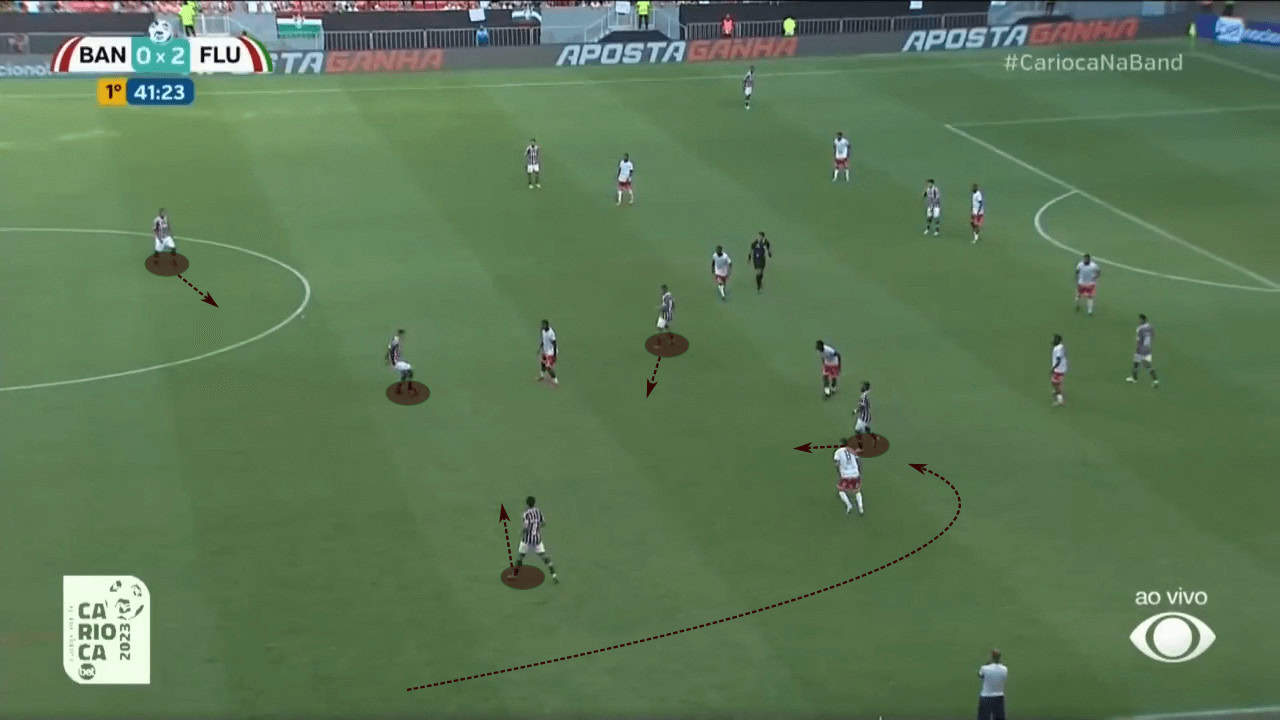
However, an overwhelming approximation is not necessary for Functional Play.
Napoli, for instance, play a much more expanded style of relational football, at least compared to Flu.
Regardless, the occupations of space and movement on the pitch follow a similar nature, as identified in the example below.
In the image, all three midfielders are positioned rather close to one another; there is no effort to rationally occupy the central channels and stretch the defensive midfield lines.
On the contrary, André-Frank Zambo Anguissa and Piotr Zieliński roam into spaces further ahead of Stanislav Lobotka.
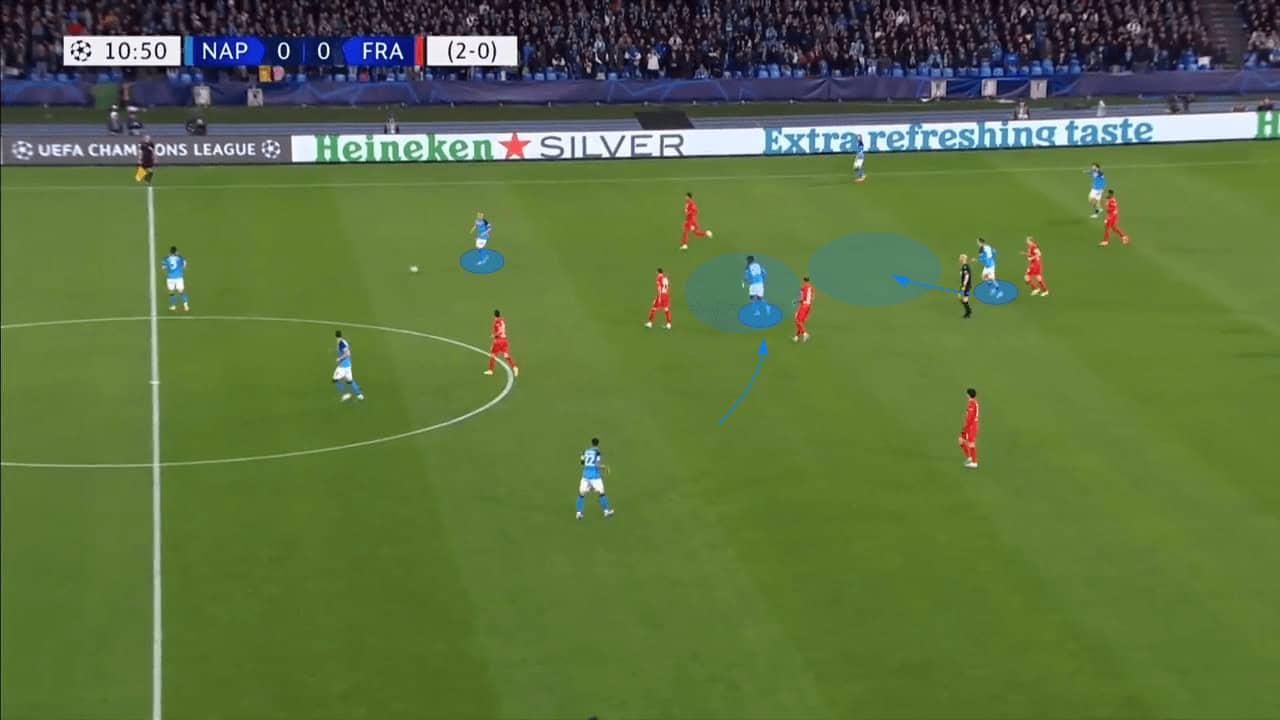
In another instance, now while Mário Rui has the ball out wide, similar trends can be identified.
Zambo Anguissa shifts ofter to provide a passing option while Zieliński finds some space further ahead.
Khvicha Kvaratskhelia also drops into the space to provide support.
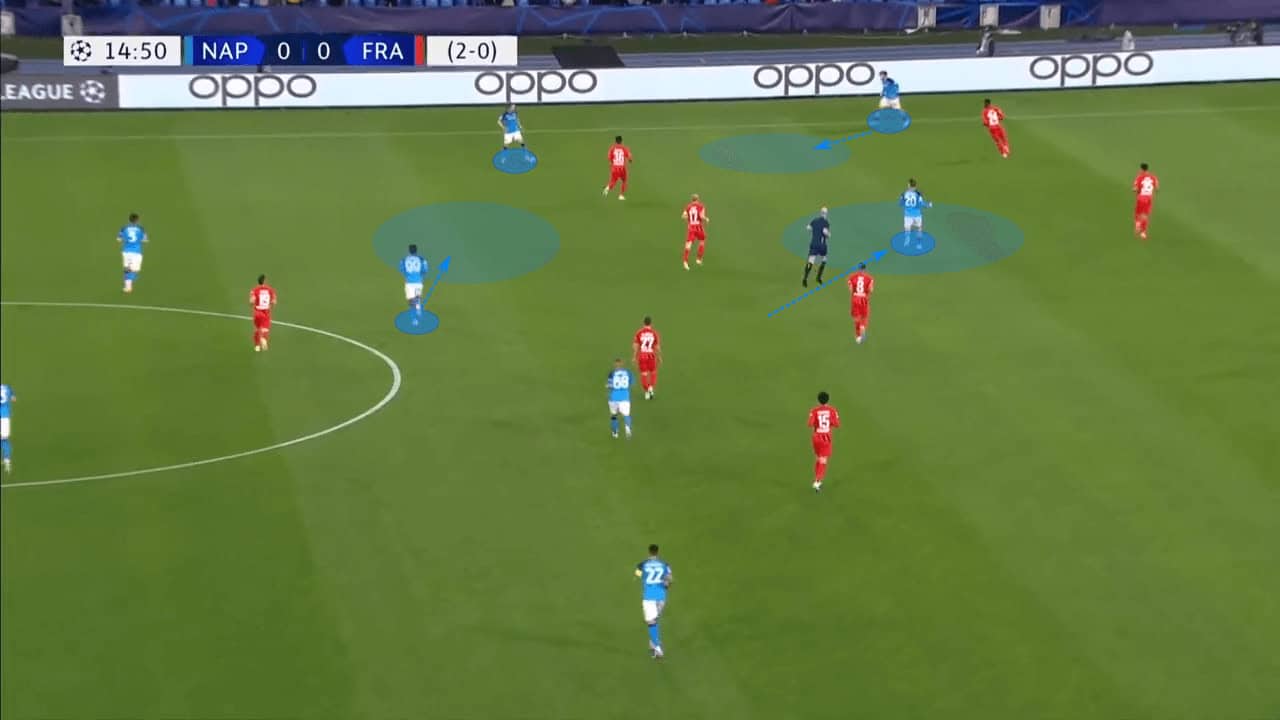
The ball-oriented nature of Functional Play is clear.
Pep Guardiola identifies his side’s ability to move the ball to the players as the players are where they are meant to be.
On the contrary, in Functional Play, the players move to the ball.
They seek this approximation, this interaction.
With such intentions, the roaming of spaces becomes much more free and interpretive.
Relations, not roles
Positions have been constantly changing.
With the introduction of Positional Play, traditional positions lost meaning and roles became more relevant.
What zones do they occupy? What is their role in the structure? What is their function? Destroyer? Advanced Playmaker? It became all about roles and functions.
In Functional Play, it is no longer about specific functions but the interpretation of an individual within a relationship.
It is the relationship with the ball, the teammates, and the opposition – the context – that determines and influences the movements and actions in a game.
This relationship goes back to a complete interaction identified earlier, where the individual is heavily influential.
Take Ganso, for example.
Ganso strongly resembles Riquelme, a slow yet brilliant player who plays the game at his own pace.
His interaction with the context is entirely different from Man City’s Kevin De Bruyne, for example.
This interaction is crucial in Functional Play, the player loses a specific function and simply interacts with the context.
In the example below, Jhon Arias and Matheus Martinelli work off him in close proximity.
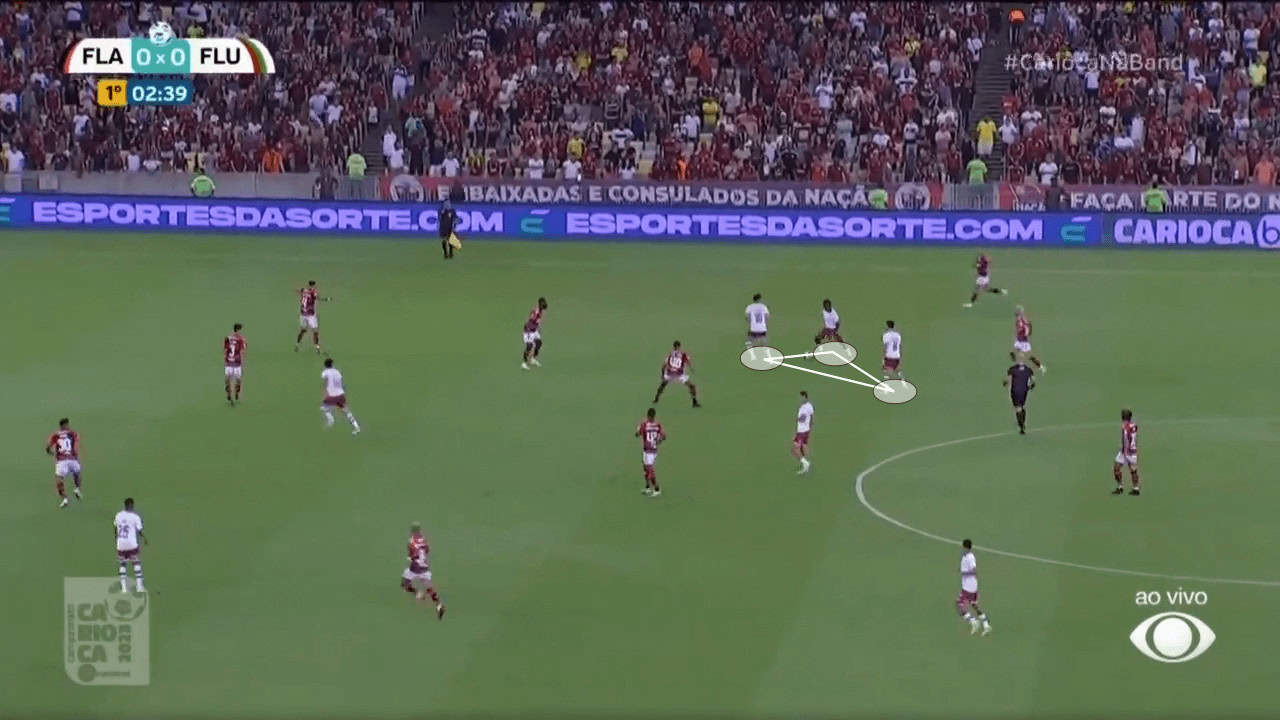
Going back to Napoli, a similar approach can be seen with Kvaratskhelia.
The player’s technical ability is unique, and Napoli exploit this.
In the scenario below, the space in that area is very congested.
Regardless, Zambo Anguissa chooses to find Kvaratskhelia who immediately plays a tabela – or one-two – with Zieliński to get out of that area, leaving four opposition players behind.
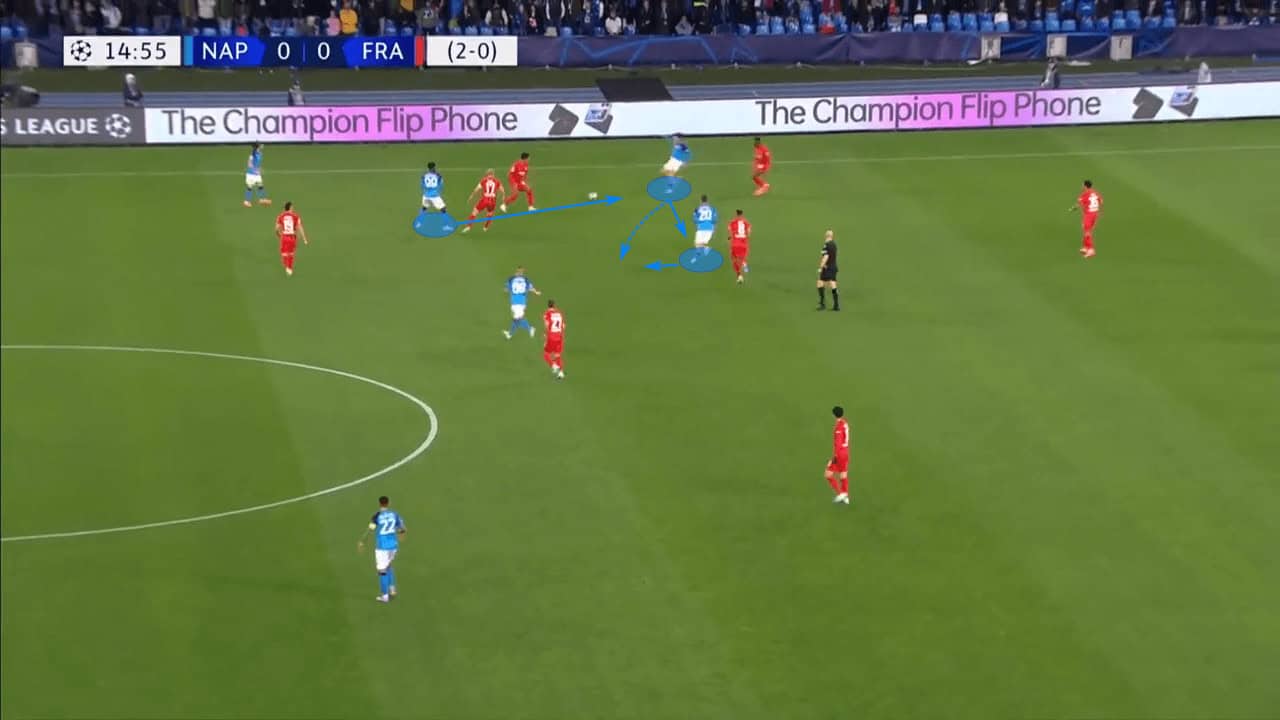
These short-distanced interactions are extremely frequent in Functional Play.
Zieliński, below, moves into space to receive the ball from Mário Rui.
The Polish midfielder immediately has Kvaratskhelia and Victor Osimhen to interact with.
Without regard for expansive shapes and stretching the opposition, the players are able to interact and play with each other much more freely.
This specific feature of Functional Play resembles its South American origins, especially with the famous Brazilian sides of the past.
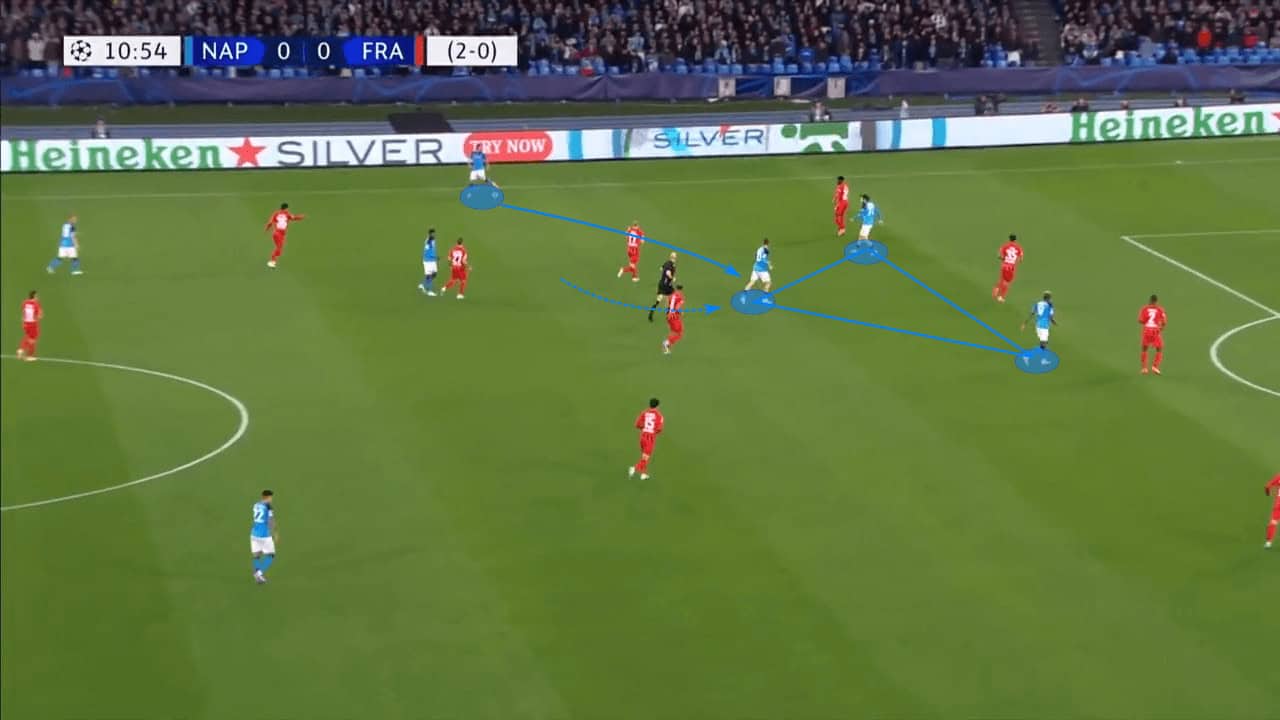
Conclusion
As a counter-revolution to the Positional Play that has dominated world football in the past years, Functional Play is quickly growing in popularity.
With South American origins, the approach is fundamentally distinct from the positional complex.
This distinction stems from the perception of space, and how it is viewed in football.
Exploring the concept of space in Functional Play allows us to understand the philosophy better, to understand the philosophy at its roots.

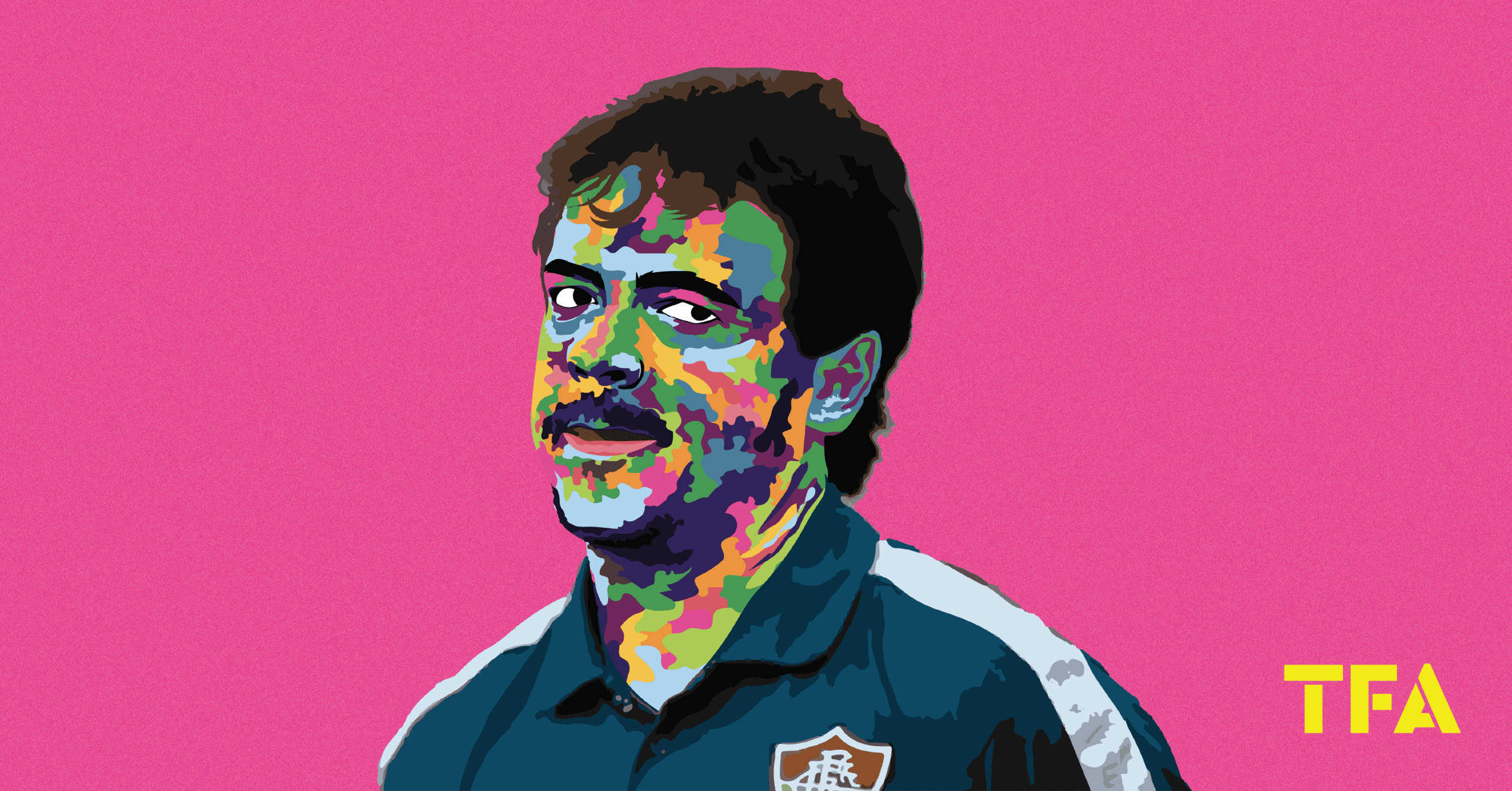



Comments